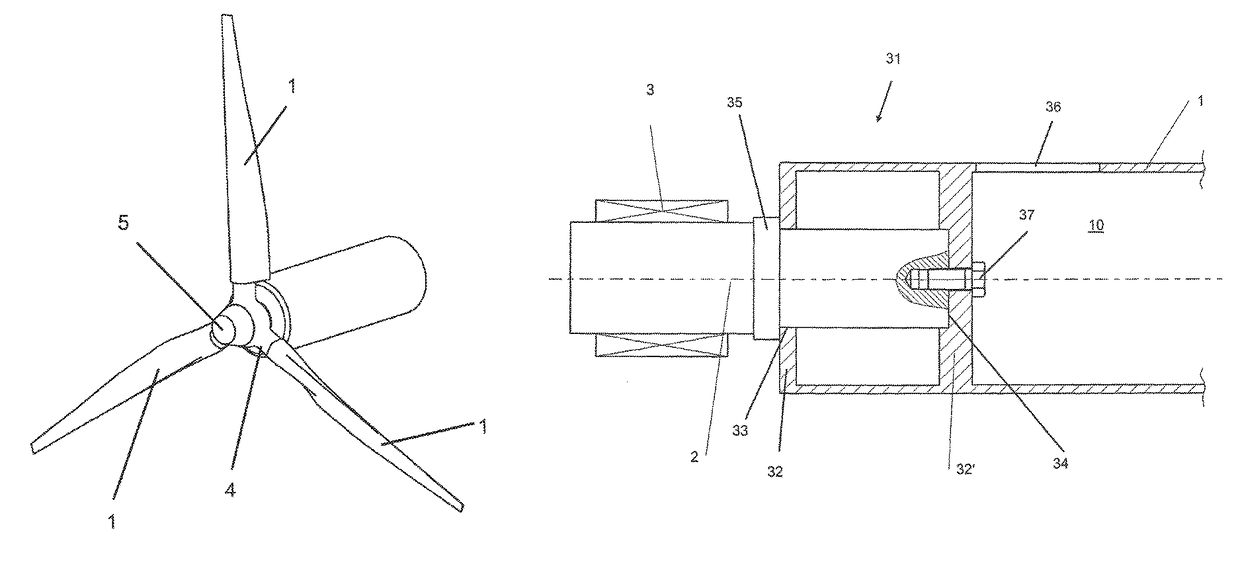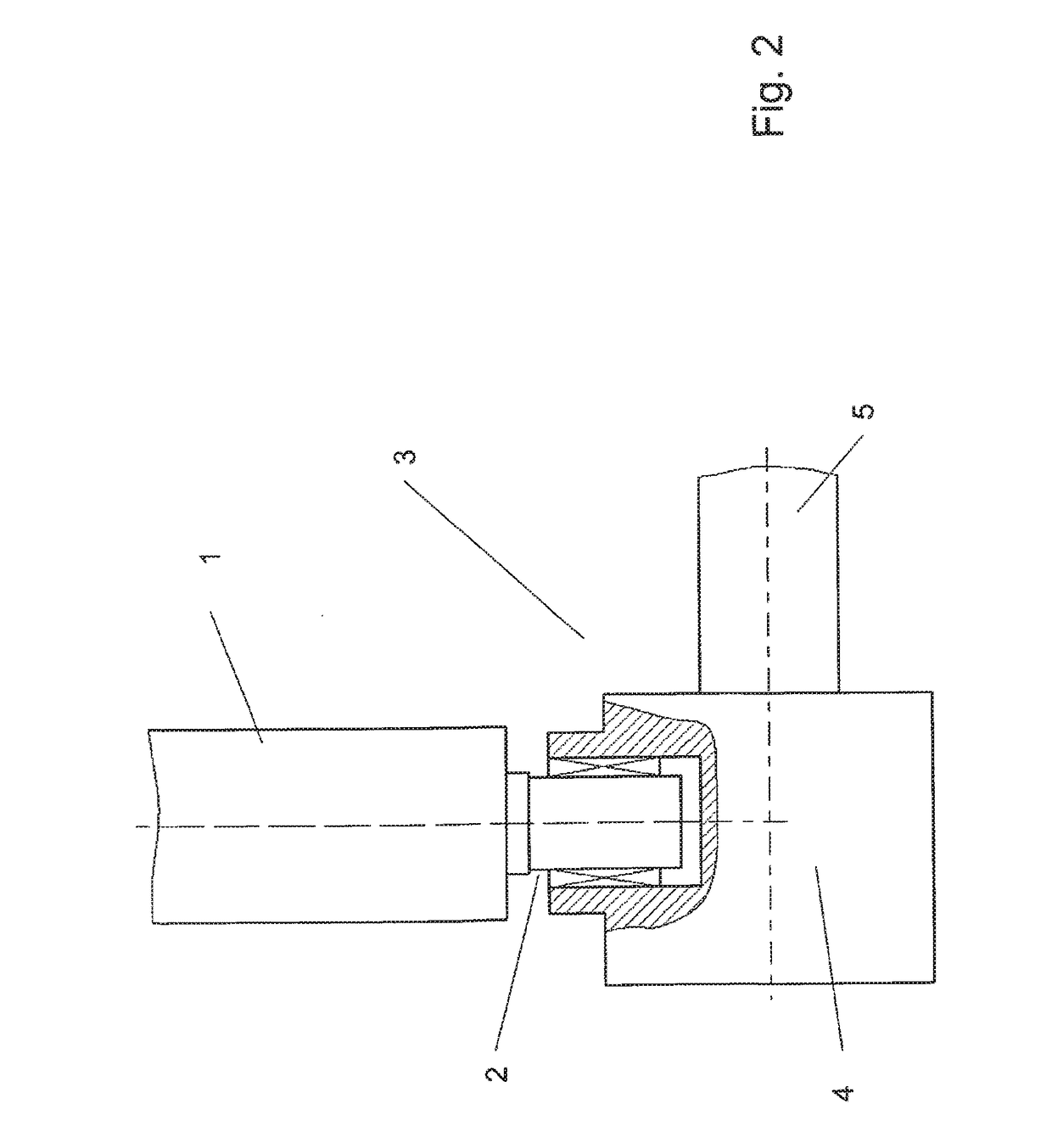Rotor blade for a turbine
a turbine and rotor blade technology, applied in machines/engines, renewable energy generation, greenhouse gas reduction, etc., can solve the problems of short assembly time on site and inability to optimize energy generation, and achieve the effect of short assembly time, easy pre-assembling, and secure in pla
- Summary
- Abstract
- Description
- Claims
- Application Information
AI Technical Summary
Benefits of technology
Problems solved by technology
Method used
Image
Examples
Embodiment Construction
[0021]FIG. 1 shows an arrangement for a turbine as is used to utilize energy from tidal currents. This turbine has, for example, three rotor blades 1, which are connected to the shaft 5 via hub 4. However, two, four, or more blades can also be used.
[0022]FIG. 2 shows how a rotor blade 1 is connected to the shaft 5. Here, the journal 2 of the rotor blade 1 is secured via a bearing or other fastening 3 in the hub 4, which is connected permanently to the shaft. Here, devices may be provided that can be used to rotate the rotor blade in the current for optimum energy generation.
[0023]FIG. 3 now shows a variant according to the invention of the connection between the journal 2 and the rotor blade 1. The lower end 31 of the rotor blade 1 contains power transmission elements, which are shaped as ribs 32, 32′, in the cavity 10. The journal 2 is inserted through an exactly fitting opening 33 in the bottommost rib 32 into the lower end 31 of the rotor blade 1 and reaches as far as the topmost...
PUM
 Login to View More
Login to View More Abstract
Description
Claims
Application Information
 Login to View More
Login to View More - R&D
- Intellectual Property
- Life Sciences
- Materials
- Tech Scout
- Unparalleled Data Quality
- Higher Quality Content
- 60% Fewer Hallucinations
Browse by: Latest US Patents, China's latest patents, Technical Efficacy Thesaurus, Application Domain, Technology Topic, Popular Technical Reports.
© 2025 PatSnap. All rights reserved.Legal|Privacy policy|Modern Slavery Act Transparency Statement|Sitemap|About US| Contact US: help@patsnap.com



